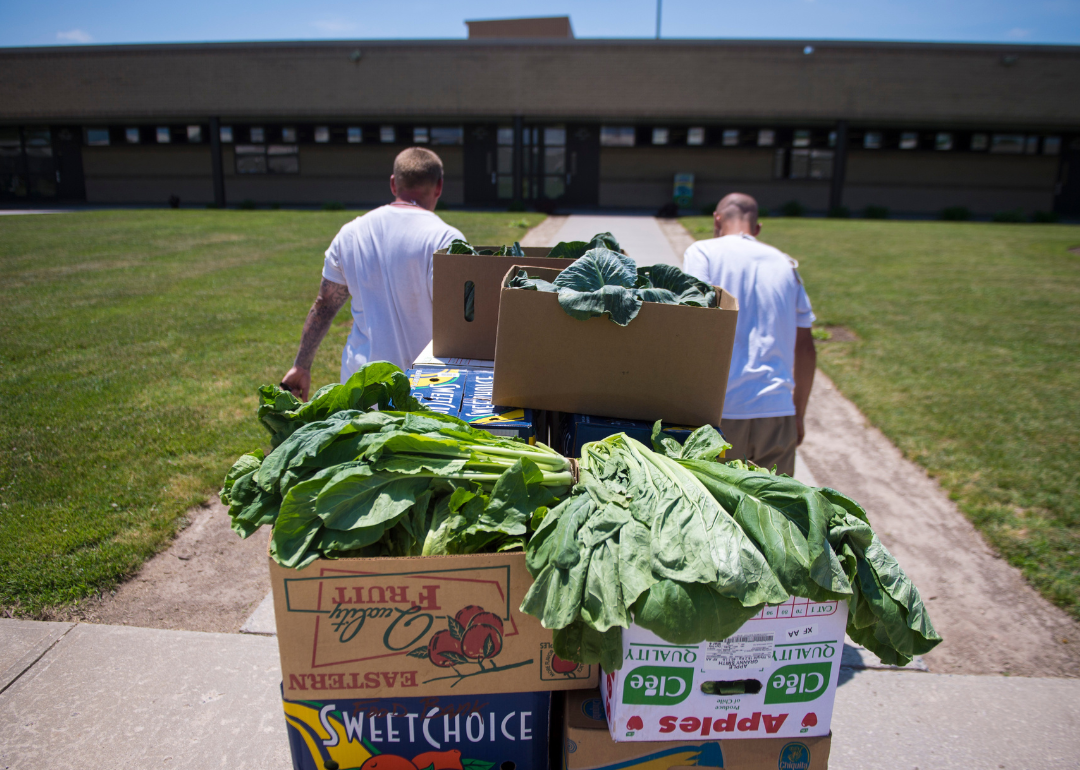
Can prison gardens help address the problem with mass incarceration?
Can prison gardens help address the problem with mass incarceration?
While there is no centralized system that tracks all crime data, FBI and Bureau of Justice Statistics data suggest that reported crime rates, on the whole, are falling.
Yet with nearly 2 million people in confinement, the United States has the largest incarcerated population in the world: both in terms of the total number and relative to the country's overall population. This includes more than 1.3 million people currently serving out sentences in federal and state prisons and local jails, and close to half a million awaiting convictions.
This begs the question: Is the country plagued by crime, or suffering under an uncalibrated criminal justice system?
Stacker consulted academic research, program outcomes, and government data to look at what the U.S. prison population looks like today, and how horticulture therapy is being used to improve the quality of life for inmates currently incarcerated and after their release.
Beginning in the early 1980s, the "tough on crime" era in the U.S. ushered in a 400% increase in the federal and state prison population over the next two decades. Policy changes such as minimum sentencing requirements, the Three Strikes law, Truth in Sentencing laws, and the concurrent War on Drugs campaign meant more people were sent to prison—and often with longer sentences. The number of people incarcerated for drug offenses alone increased nearly tenfold, according to Bureau of Justice data, from roughly 41,000 in 1980 to 430,926 in 2019.
The idea that increased incarceration rates and longer sentences directly lead to lower crime rates—the core tenet of the "tough on crime" ideology—is widely debated. Some research suggests that over the last 20 years, nearly 0% of the reduction in crime can be attributed to the increased use of incarceration. Data also suggests that in certain communities, increased incarceration can lead to an increase in crime by perpetuating cycles of broken families, police mistrust, and economic disadvantage.
America's prisons and jails are woefully, and intentionally, bad at preparing inmates to rejoin society because the criminal justice system operates, in large part, on punishment, not reform. As result, two out of every three people who serve time in prison are rearrested within three years of their release. Former inmates are also more than 100 times more likely to die of an overdose, and more likely than the general population to commit suicide.
Recidivism comes with a high price. According to a study conducted by the Illinois Sentencing Policy Advisory Council, which looked at recidivism costs in that state, a single instance of reincarceration can cost taxpayers more than $50,000.
Over the course of five years, recidivism could cost Illinois over $13 billion, a fraction of what it costs the nation as a whole. The U.S. spends near $81 billion annually on mass incarceration, according to the Bureau of Justice Statistics. Most states spend more money to keep someone incarcerated than to educate a child.
Programs like prison gardens, which are part of a horticulture therapy movement and a relatively recent push for rehabilitation within the prison system, are helping inmates better prepare for life outside of incarceration by improving mental health, fostering socialization and problem-solving skills, and providing training that could eventually lead to employment. For those who may never rejoin society, prison gardens grow purpose—something beautiful amid something bleak.
Prison gardens are not the solution to mass incarceration or high recidivism rates. They are more akin to a bandaid on a deep wound. But they can teach us the value of providing rehabilitative services if the end goal is to reduce mass incarceration and break the socioeconomic cycles associated with it.
You may also like: Marijuana violations have taken over 10,000 truck drivers off the road this year, adding more supply chain disruptions
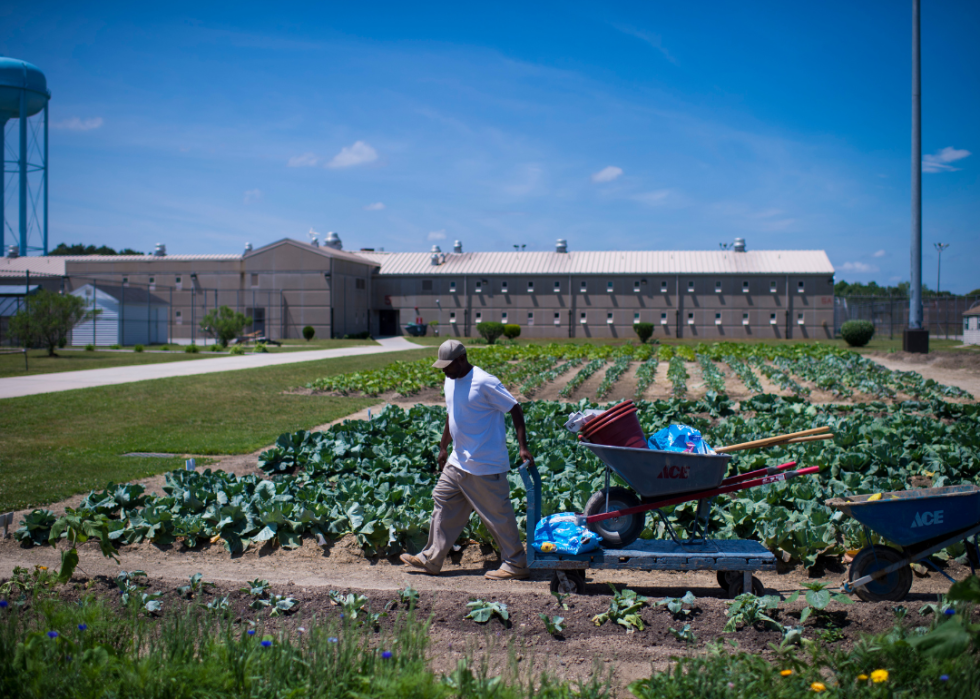
History
The first official prison garden program in the U.S. began at Rikers Island in 1997. Launched by the Horticulture Society of New York, the GreenHouse, as it is referred to, is the country’s oldest and largest prison garden. Six years later, the Insight Garden Program was launched at Solano and San Quentin State Prisons in California. Today, more than 15 state prison systems offer landscaping, gardening, and horticulture training programs.
It is important to note the difference between rehabilitative agricultural training and forced prison labor, which has become more common in the food industry in recent years. With fewer immigrants available for farm labor, many growers have turned to prison labor, or convict leasing, which is cheap and abundant. Inmates are excluded from federal minimum wage laws, and in some states make as little as $3 per hour before deductions. Prison gardens, even those that feed surrounding communities, are structured for the benefit of inmates.
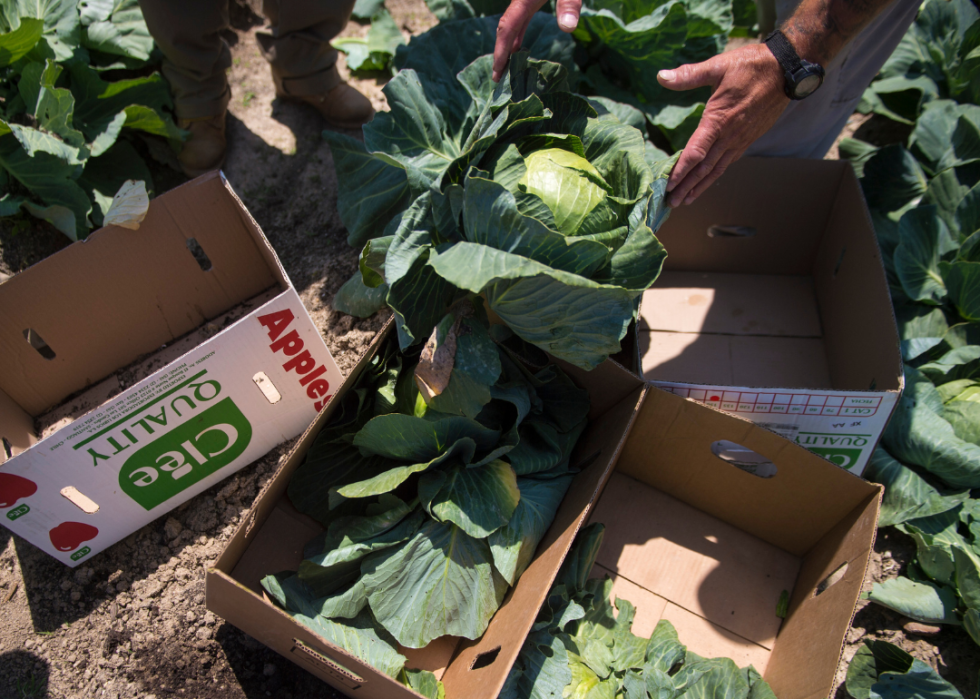
Mental health in US prisons
The U.S. incarcerates a disproportionate amount of people who have mental health challenges and most prisons and jails are not designed to treat them. More than 40% of people in state prisons have been diagnosed with a mental disorder, and the majority of them never receive any mental health care.
Compared to the overall U.S. population, more incarcerated people suffer from bipolar disorder, post-traumatic stress disorder, and schizophrenia or other psychotic disorders, and the rates of mental illness among incarcerated women are nearly double that of incarcerated men.
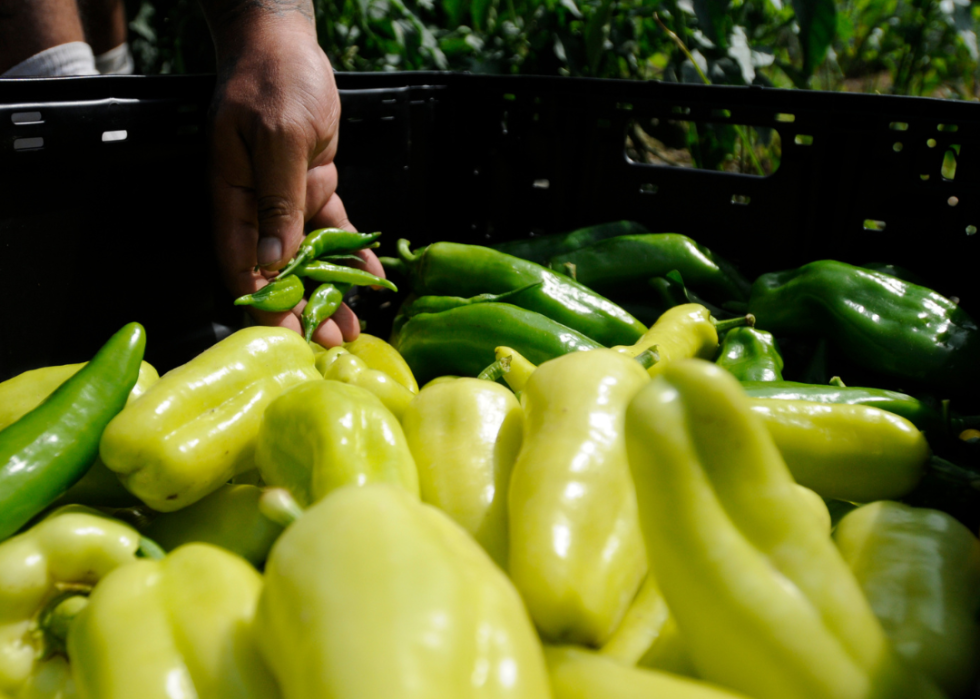
Benefits for the community
In addition to providing fresh food for the prison facilities themselves, many prison gardens donate portions of their harvests to the surrounding communities. In Missouri, for example, Restorative Justice Gardens across the state generate roughly 100 tons of fresh produce to donate to food banks, shelters, schools, and senior centers.
According to the WA Food Fund, the number of people in Washington who were at risk of not having enough to eat during the pandemic reached 1.6 million. The Washington State Corrections’ Hope Gardens donated nearly 74,000 pounds of produce to at-risk communities to help mitigate the risk of food shortages. Inmates across the country are giving back to their surrounding communities—to people perhaps a lot like them, who need help, and whose lives could be positively impacted by receiving it.
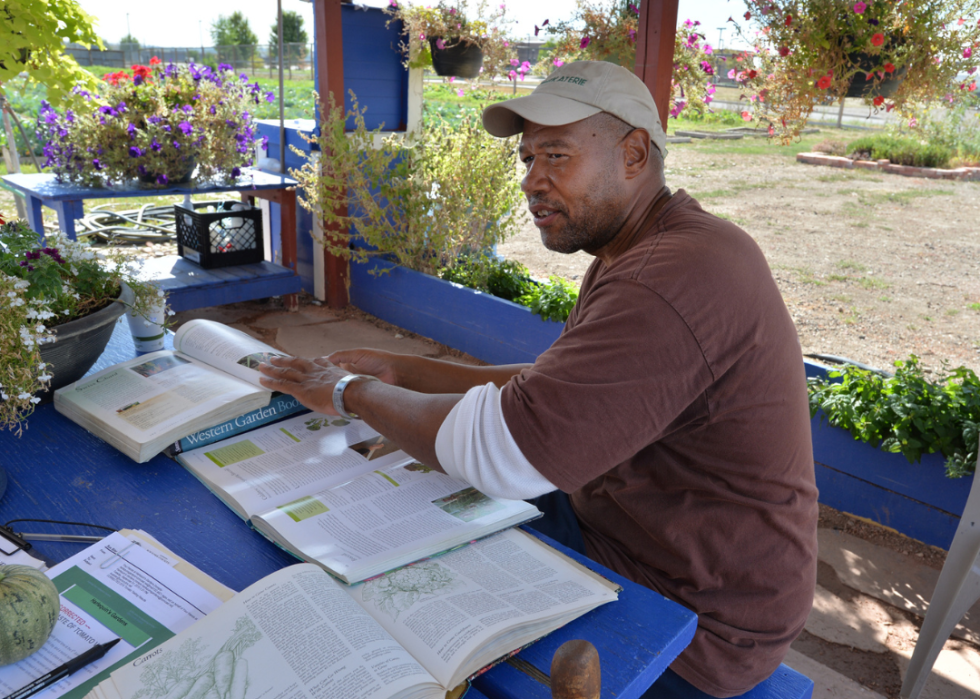
Benefits for the inmates
Research shows horticulture therapy increases self-efficacy, self-worth, and life satisfaction for inmates. It also decreases anxiety and depression symptoms and reduces recidivism rates for participants when compared to the rest of the incarcerated population. Less than 10% of the 117 California-based Insight Garden Program participants who were paroled between 2003-2009 were reincarcerated. California’s average recidivism rate over the same period was 64%.
Some programs, like Roots to Re-Entry, also incorporate vocational training into their therapy work so inmates leave with hands-on skills to improve their chances of landing a green job upon their release. Participants build connections with program instructors who can serve as references uniquely positioned to speak to their character and growth.
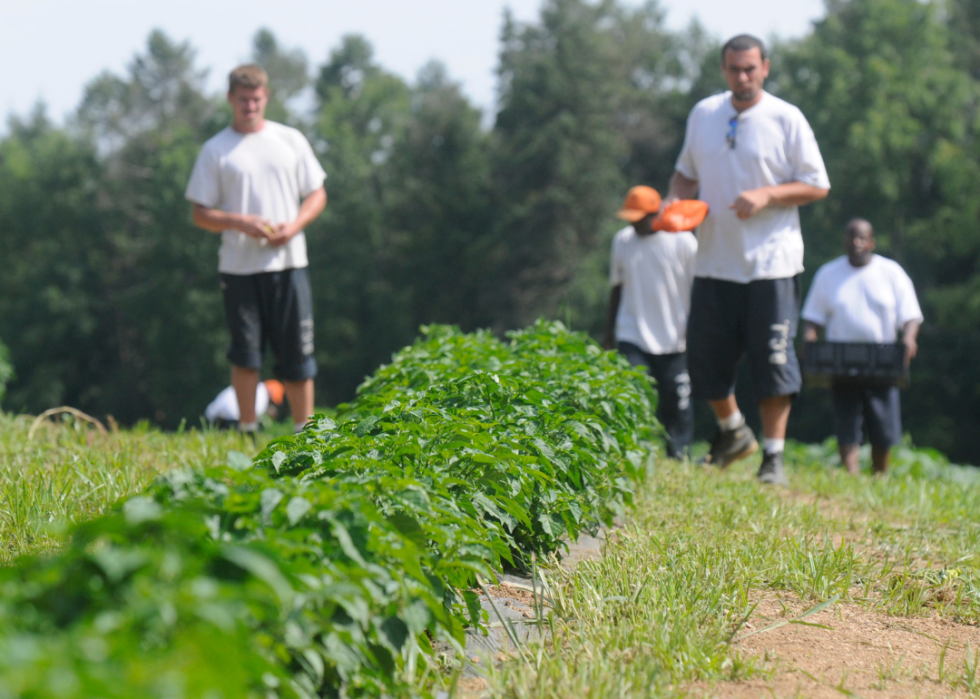
Concerns, shortcomings, discussion
As mentioned before, many prison garden programs boast lower recidivism rates among participants than the general prison population—a positive result no matter how you look at that fact on its own.
However, participant selection, which is often left to the correctional facilities, may unfairly overlook some inmates, such as those with a history of serious or violent crimes—despite the fact that such inmates make up the overwhelming majority of the prison population. According to a U.S. Department of Justice study tracking recidivism rates between 2005-2014, such prisoners are less likely to be rearrested for committing crimes after release than prisoners released for property offenses. Unfortunately, the majority of states have criminal justice reforms that exclude people convicted of violent offenses.
Program participation does not guarantee a prosperous life upon reentry to society. People who were incarcerated will forever be labeled as criminals and not all employers are willing to take the risk of hiring someone with that history. Research shows that having a criminal record reduces employer callback rates by 50%. Inmates are not reentering a society free from the socioeconomic inequities that may have contributed to their incarceration in the first place.
While their experience with horticulture therapy can inform how they approach adversity, it does not get at the root of the systemic inequality leading to and exacerbated by mass incarceration.
You may also like: 50 facts about food insecurity in America



